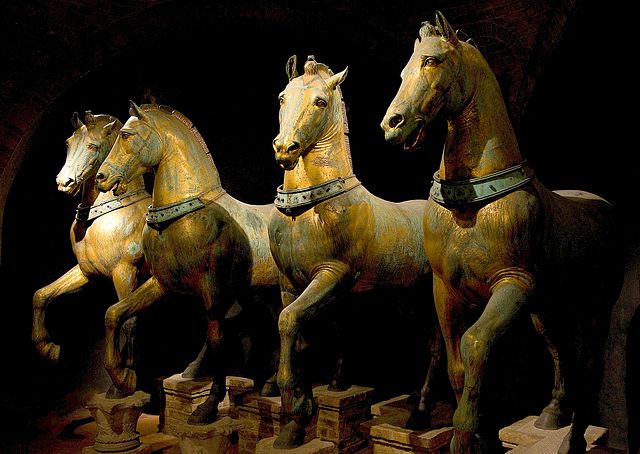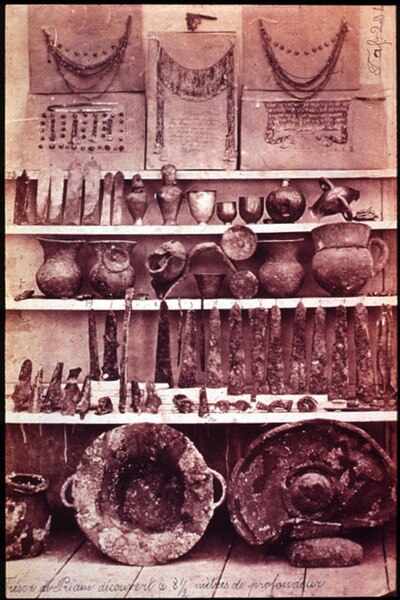Repatriation (cultural property)
Repatriation is the return of the cultural property, often referring to ancient or looted art, to their country of origin or former owners.
The Horses of Saint Mark; looted by the Republic of Venice in the Sack of Constantinople in 1204, then by the Revolution Army of Italy leads by Bonaparte from Venice in 1797, but repatriated to Italy in 1815.
Victory Stele of Naram Sin, Akkadian Dynasty, reign of Naram-Sin (2254–2218 BC). Louvre, Paris.
The Rosetta Stone, key to the decipherment of Egyptian hieroglyphs, 196 BC
Triumphal procession into Paris of art looted by Napoleon from Italy in 1797. The Horses of Saint Mark in the center were returned to Italy in 1815 following the Congress of Vienna, the first international congress dealing with looting of artworks.
Looted art has been a consequence of looting during war, natural disaster and riot for centuries. Looting of art, archaeology and other cultural property may be an opportunistic criminal act or may be a more organized case of unlawful or unethical pillage by the victor of a conflict. The term "looted art" reflects bias, and whether particular art has been taken legally or illegally is often the subject of conflicting laws and subjective interpretations of governments and people; use of the term "looted art" in reference to a particular art object implies that the art was taken illegally.
The sack of Jerusalem, from the inside wall of the Arch of Titus, Rome
Virgin and Child with St. John the Baptist and St. Stanisław by Palma il Giovane was looted by Napoleon and returned to Warsaw in the 1820s. It was later destroyed by the Germans during the Warsaw Uprising.
The Sistine Madonna by Raphael, looted by the Soviets after World War II and returned to the Dresden Gallery (Gemäldegalerie Alte Meister) in East Germany in 1955.
The so-called Priam's Treasure, discovered at and illegally taken from Troy by the German archaeologist Heinrich Schliemann. It disappeared in 1945 from a protective bunker in Berlin to which it had been transferred from the Berlin State Museums and reappeared in September 1993 at the Pushkin Museum in Moscow.








